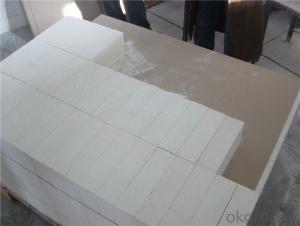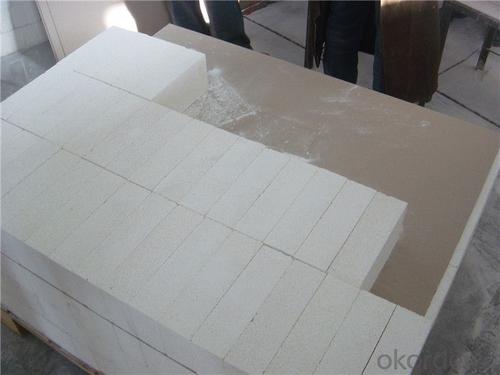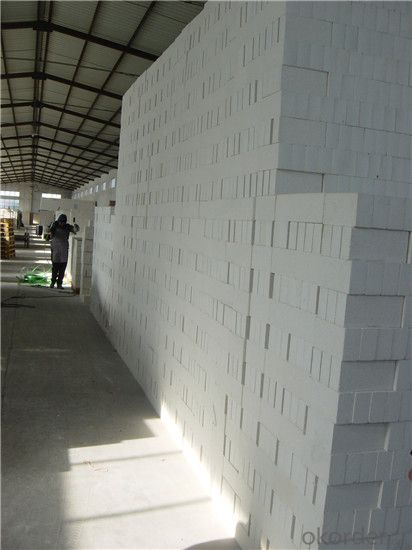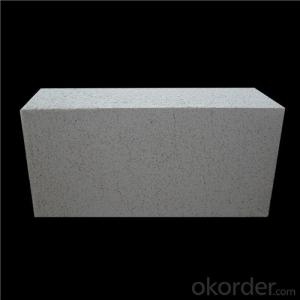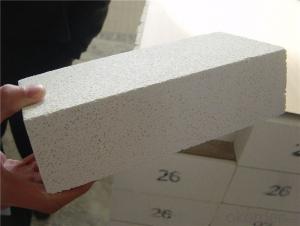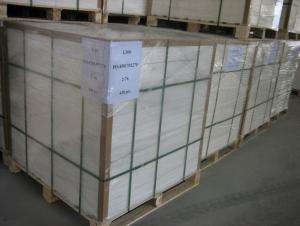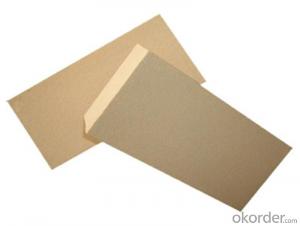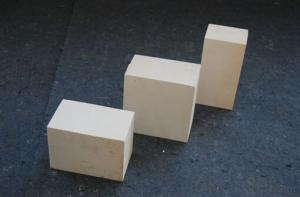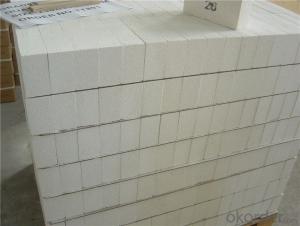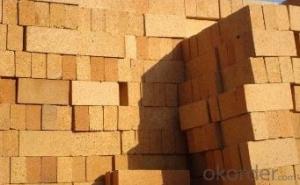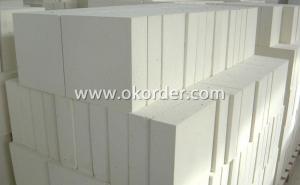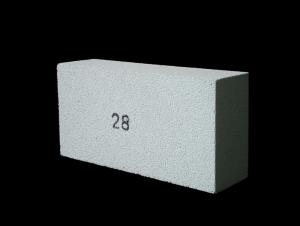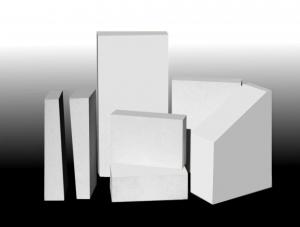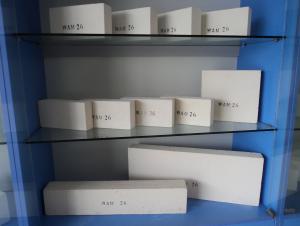Insulating Fire Brick - GJM32 Fire Light Mullite Insulation Brick
- Loading Port:
- Shanghai
- Payment Terms:
- TT OR LC
- Min Order Qty:
- 1 m.t.
- Supply Capability:
- 10000 m.t./month
OKorder Service Pledge
OKorder Financial Service
You Might Also Like
Thermal Insulation Fire Clay Brick
Refractory brick is a refractory material used in lining furnaces, kilns, fireboxes, and fireplaces.
We provide high quality Refractory Fire Bricks that are used on wide range in the various industries like Cement, Glass and Steel. Refractory Fire Bricks are provided as per the quantity and specifications required by the customers. We provide an extensive range of Refractory Fire Bricks at reasonable prices that depend upon the quantity ordered.
Application
Insulating Fire Brick are used for the lining of converter, alternating current arc furnace, direct Current arc furnace and the ladle slag line, etc.
Company Advantage
(1)Long Insulating Fire Brick manufacture history: 25 years manufacturer
(2)Advanced equipment and good service
(3)Diversification of production standards: ISO ANSI FEPA JIS ASTM
(4)Flexible payment: T/T L/C D/P D/A
(5)Professional marketing team and after-sale service
Insulating Fire Brick main feature:
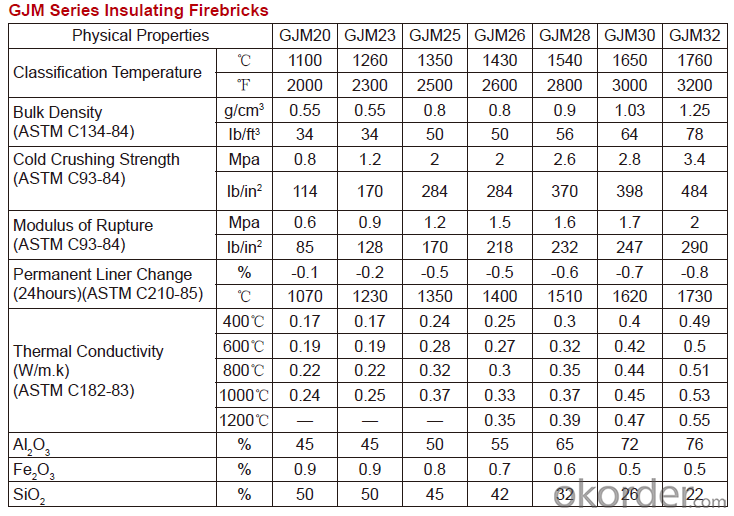
Equipment
1 unit of Ceramic Abrasive (SG Abrasive) pilot production line
2 units of Compact grain Abrasive pilot production lines
1 unit of high-end coated abrasives (abrasive cloth) production line
3 large flexible crushing and sieving lines for grit production lines
6 units of 5000KVA-10000KVA dumping type electric arc furnaces for Brown Fused Alumina fusion
FAQs
Q1 What’s the transport method?
A1 FCL delivery goods with wooden pallet or wooden case by sea; If LCL delivery, must with wooden case; Sometimes need open top, flat rack or bulk cargo.
Q2 What’s the required payment term?
A2 Generally 30% TT as the prepayment, 70% TT before delivery. If need, 100% Irrevocable Letter of Credit or negotiation.
Q3 Which country are our products exported to?
A3 Apart from entire Chinese market, the US, Russia, Japan, Korea, Australia and some Southeast Asian Nations.
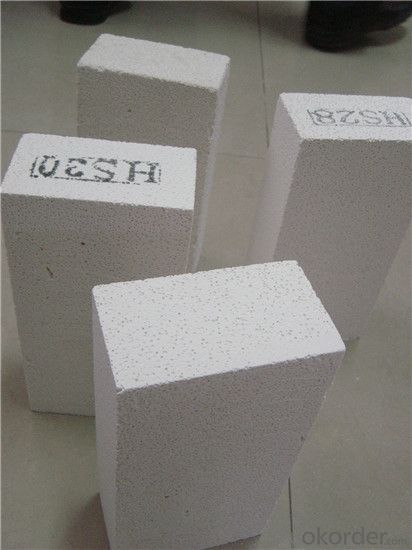
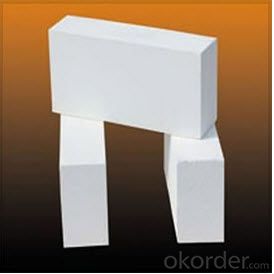
- Q: Can insulating fire bricks be used in copper smelting furnaces?
- Yes, insulating fire bricks can be used in copper smelting furnaces. Insulating fire bricks are designed to withstand high temperatures and provide excellent insulation, making them ideal for use in furnaces. They are made from materials that can handle the extreme heat generated during the smelting process and can effectively retain and reflect heat back into the furnace. This helps to maintain the desired temperature and improve energy efficiency. Additionally, insulating fire bricks can help to reduce heat loss, resulting in faster and more efficient copper smelting. Therefore, using insulating fire bricks in copper smelting furnaces is a common practice in the industry.
- Q: Can insulating fire bricks be used in the construction of radiant tubes?
- Insulating fire bricks are indeed applicable for the construction of radiant tubes. These bricks are specifically crafted to provide exceptional thermal insulation, which makes them extremely suitable for scenarios where heat preservation is crucial. Radiant tubes, on the other hand, are utilized in environments that endure high temperatures, such as furnaces and kilns, where they are exposed to intense heat. By being able to withstand such elevated temperatures, insulating fire bricks aid in minimizing heat loss, thereby leading to enhanced energy efficiency. Moreover, these bricks' insulating properties also serve to safeguard the radiant tubes against thermal shock and extend their lifespan. In summary, incorporating insulating fire bricks into the construction of radiant tubes elevates their overall performance and durability.
- Q: Can insulating fire bricks be used in refractory fibers?
- No, insulating fire bricks cannot be used in refractory fibers. Insulating fire bricks are a type of refractory material made from ceramic fibers and are used for thermal insulation, while refractory fibers are made from different materials such as alumina, silica, or zirconia and are used for high-temperature applications.
- Q: Can insulating fire bricks be used in drying ovens?
- Certainly, drying ovens can utilize insulating fire bricks. Specifically engineered with low thermal conductivity, these bricks prove to be a superb option for heat insulation purposes, notably in drying ovens. They possess the ability to endure elevated temperatures and efficiently insulate the oven, thereby aiding in maintaining the desired temperature and minimizing heat dissipation to the surroundings. Moreover, their lightweight nature and ease of installation render insulating fire bricks a highly practical selection for incorporation into drying ovens.
- Q: Can insulating fire bricks be used as a backup insulation in refractory linings?
- Yes, insulating fire bricks can be used as a backup insulation in refractory linings. Insulating fire bricks are designed to have low thermal conductivity, which makes them effective in reducing heat transfer in high-temperature applications. Their insulating properties make them ideal for use as a backup insulation layer in refractory linings, helping to further reduce heat loss and improve overall energy efficiency. Additionally, insulating fire bricks are lightweight, which makes them easier to handle and install compared to other refractory materials. However, it is important to consider the specific requirements of the application and consult with a refractory engineer to ensure that insulating fire bricks are suitable for the specific conditions and performance requirements of the refractory lining.
- Q: What is the typical bulk density of an insulating fire brick?
- The typical bulk density of an insulating fire brick is around 0.6 to 1.2 grams per cubic centimeter (g/cm³).
- Q: Can insulating fire bricks be used in crucibles?
- Crucibles do not allow the use of insulating fire bricks. Insulating fire bricks are primarily meant for insulation purposes in kilns, furnaces, and fireplaces, where low thermal conductivity is desirable. On the other hand, crucibles necessitate materials with high thermal conductivity and resistance to endure the intense heat and chemical reactions involved in processes like metal melting or refining, conducting high-temperature experiments, or performing chemical reactions. Consequently, crucibles are generally constructed using materials like graphite, clay, or ceramic, which can withstand the extreme conditions and facilitate efficient heat transfer.
- Q: Can insulating fire bricks be used for insulation in chemical plants?
- Indeed, insulation in chemical plants can be achieved with the utilization of insulating fire bricks. These bricks are crafted from lightweight materials possessing exceptional insulating characteristics, such as ceramic fibers or refractory materials. Their composition renders them capable of enduring elevated temperatures, thus rendering them suitable for deployment in environments where chemical procedures generate heat. Within chemical plants, insulating fire bricks can be employed in a multitude of applications, including the lining of furnaces, reactors, kilns, and other equipment. By virtue of their remarkable insulating properties, they aid in minimizing heat loss, conserving energy, and maintaining optimal operating temperatures, thereby ensuring the utmost efficiency and safety in the chemical processes.
- Q: How do insulating fire bricks affect the overall energy consumption of a kiln?
- The overall energy consumption of a kiln is greatly influenced by insulating fire bricks. These bricks are crucial in preventing heat transfer due to their low thermal conductivity. By incorporating these bricks into a kiln, the amount of heat lost to the surroundings is significantly reduced, resulting in improved energy efficiency. When the kiln is in operation, it is essential to properly insulate the walls to prevent the high temperatures inside from escaping. Failure to do so would require the kiln to continuously generate additional heat to maintain the desired temperature. However, insulating fire bricks act as a barrier, effectively trapping the heat within the kiln. This means that less energy is needed to achieve and sustain the desired temperatures, resulting in reduced energy consumption. Furthermore, insulating fire bricks also contribute to faster heat-up and cooling cycles. They have a low heat storage capacity, which means they do not absorb and retain heat for prolonged periods. Consequently, the kiln can quickly reach the desired temperature during the heating phase, reducing the time and energy required for optimal kiln operation. Similarly, during the cooling phase, insulating fire bricks aid in dissipating heat more rapidly, allowing for a quicker cooldown and lower overall energy consumption. In conclusion, insulating fire bricks have a significant impact on a kiln's overall energy consumption. By minimizing heat loss, improving energy efficiency, and facilitating faster heating and cooling cycles, these bricks contribute to substantial energy savings and decreased operating costs.
- Q: Are insulating fire bricks suitable for insulation in chemical reactors?
- Yes, insulating fire bricks are suitable for insulation in chemical reactors. These bricks are made of lightweight materials such as clay and have a high insulating property, which helps to minimize heat loss and maintain stable temperatures inside the reactor. Additionally, they are resistant to thermal shock and can withstand high temperatures, making them an ideal choice for insulation in chemical reactors.
Send your message to us
Insulating Fire Brick - GJM32 Fire Light Mullite Insulation Brick
- Loading Port:
- Shanghai
- Payment Terms:
- TT OR LC
- Min Order Qty:
- 1 m.t.
- Supply Capability:
- 10000 m.t./month
OKorder Service Pledge
OKorder Financial Service
Similar products
Hot products
Hot Searches
Related keywords
